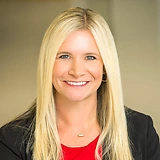By: Lyndsey Barnett and Michaela Taylor*
Next up on our updates on SECURE 2.0 is Section 111 which addresses rising student loan debt. According to an article published by the Education Data Initiative last October, student loan debt totals $1.745 trillion. While SECURE 2.0 contains many new changes impacting benefit plans, this provision may provide employers with a unique recruitment and retention opportunity for more recent graduates who are not always focused on retirement savings.
Beginning in 2024, employers may begin making matching contributions for employees making qualified student loan payments (QSLP). Prior to SECURE Act 2.0, matching contributions could only be made if an employee was making elective deferrals. A qualified student loan payment is broadly defined as, “any indebtedness incurred by the employee solely to pay qualified higher education expenses of the employee.” Eligible plans include 401(k) plans (including safe harbor 401(k) plans), 403(b) plans, or SIMPLE IRAs, as well as governmental 457(b) plans.
While amending a plan to provide matching contributions for QSLPs is optional, if a plan chooses to implement this provision, they must treat the QSLP matches the same as matches on employee deferrals. Plans will also have the option to test the matching contributions as a part of its general discrimination testing or as a separate group, but for other requirements, the student loan repayments are not treated as contributions to the plan.
QSLPs eligible for a match cannot exceed the maximum deferral ($22,500 in 2023) or the maximum annual addition limit, ($66,000 or 100 percent of the participant’s compensation in 2023). To verify payments, an employer may require annual submissions of employee certification which can be obtained by the employee from their loan servicer.
The IRS and Treasury Department have been authorized to issue model plan amendments and regulations surrounding the frequency of QSLP matches, but matches cannot be made less frequently than annually. Stay tuned for updates as more guidance is issued regarding this new optional feature. If you have any questions about this, or any portion of SECURE 2.0, please contact any of Graydon’s Employee Benefits team.


